(Note from the author: This is a automated translation from the original German text)
The fascinating thing about whiskey is certainly its diversity.
the recipe, the use of other types of grain, the type, nature and
size of the stills, the skills of the individual distiller and,
of course, the individual barrel influences make each distillate
unique. The range of flavor profiles created by the sum of
possibilities in production isvast and one reason why whiskey
has so many friends. However, its fascination also lies in the
fact that whiskey looks back on a centuries-old history that has
left its local traces in many places. That’s why in Ireland,
connoisseurs with both a technical interest in distillation and
whiskey history will find a good breeding ground to realize their
potential. One character who fits this bill is Nicholas „Nick“
Ryan of The Limerick Spirits Company, known for the Thomond Gate
Limerick Whiskey brand.
In Nick Ryan bundles a wealth of knowledge about the history of
his hometown Limerick, which was historically once a small center
of brewing and distilling in Ireland, with his penchant for
whiskey. Talking to Nick, his knowledge and this fascination,
which he has lived and breathed commercially with great passion
since 2019, is palpable. At the beginning of April 2022, I got the
opportunity to learn with Nicholas Ryan in detail about Limerick,
the former Thomond Gate Distillery and more about his current
company The Limerick Spirits Company.
Nick Ryan and his hometown Limerick
I have an appointment with Nick Ryan on a Saturday morning in the
centre of Limerick. Beforehand, he had suggested the Milk Market
as a meeting place, a kind of open market hall with many different
stalls. It is shortly after 8 o’clock and the hall is still quite
busy. Quickly Nick catches sight of me and calls me from the side.
We greet each other and he asks if I am hungry. At a stand he buys
two Breakfast Rolls for us, a kind of Irish Breakfast Burger. It
is delicious. At one Nick buys another stand still different sweet pastries, which he
wants to bring home later for his family. Then we sit down outside
the hall on a heated bench, eat and start to talk.
„The Milk Market is always a very popular place on Saturdays,“
Nicholas Ryan begins. It’s still nippy in Limerick on this April
morning and he’s wearing a cap on his head. „We can go for a walk
around the city in a minute. There’s a lot to see here.“ As we
continue to eat our Breakfast Rolls, Nick begins his story in
19th century Limerick. „Limerick had a significant tobacco
industry. Plus a large number of abattoirs that processed pork.
Ham from Limerick was a trademark and was considered Queen
Victoria’s favourite,“ he elaborates. Yet Limerick’s location at
the end of the great estuary of the River Shannon was crucial to
its economic success. „The port was a hub at the time.
Goods came over the sea from outside Ireland and over the Shannon
from inland and were distributed in all directions from here,“
Nick tells us about Limerick.
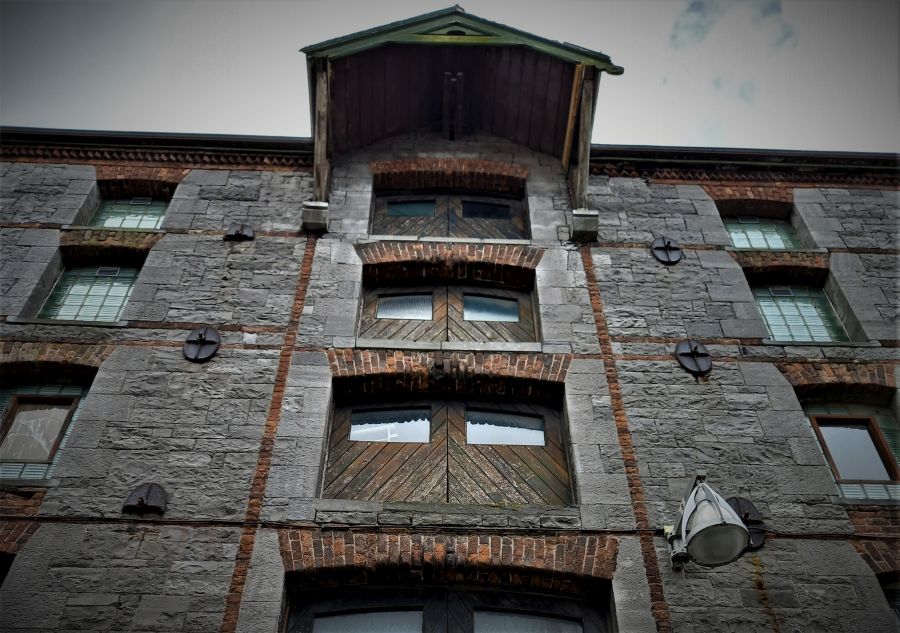
Limerick: A story of trade and change
After we finish eating, we hit the road. We walk through downtown
and Nick stops at various points. „When planes came along, the
decline of the port began.
From then on, goods were transported by air,“ he reports. We stand
at a street corner and look across to the other side. To the left
we see large, old buildings behind a construction fence. Larger
gaps have already been torn in what was once a continuous row of
houses. „These used to be warehouses, full of goods coming across
the harbor,“ Nick knows. The now-protected building structures
will be preserved while their surroundings are completely renewed
as part of a neighborhood redevelopment. A sign of the overdue
change in the former commercial location.
To our right there is a beautiful building. The facade is richly
decorated, artistically designed arches
decorate the balconies on the upper floor. Nick points to the
initials M.E. inscribed along the facade: „That stands for
Michael Egan and this magnificent building was his place of
business. Egan started as a small grocer, quickly expanded his
business to include tea and then wines and spirits. All goods
that came in or went out through the harbor and were traded by
businessmen like Egan and later his sons.“ Like many such
merchants at the time, however, the business went out of business
in the first half of the 20th century.
Century under. Today, the historic building is home to a centre
for the arts.
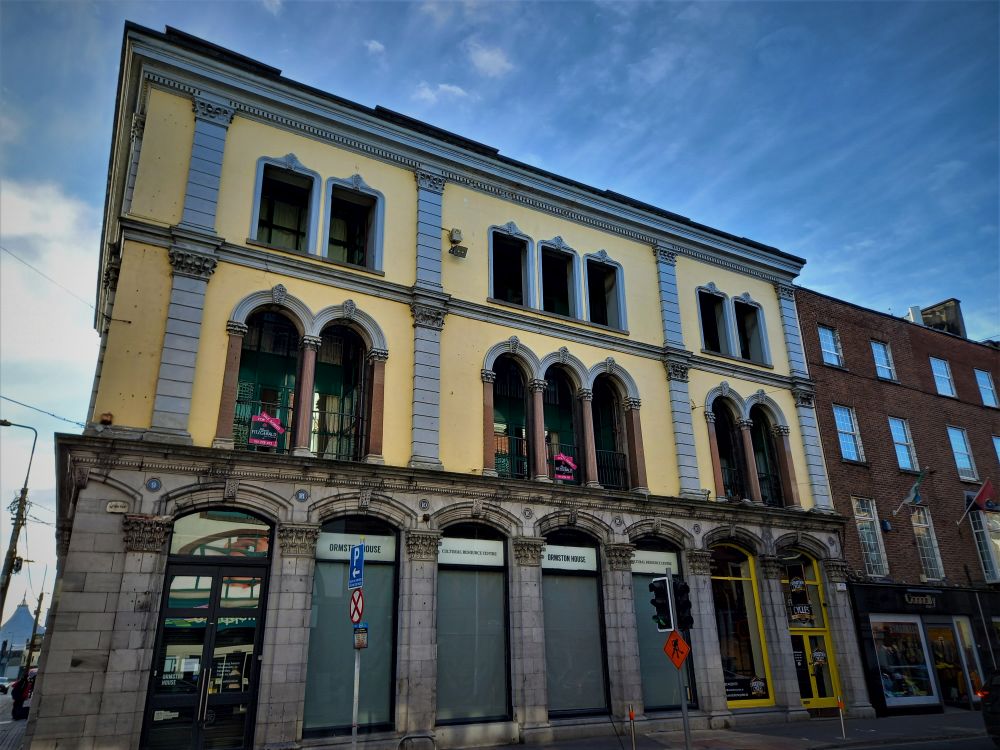
Guinness casks and turf
Nick’s car is parked around the corner in a backyard. We drive a
short distance through the now bustling streets of Limerick. „Over
there is the butcher shop where my father worked,“ Nick points to
a building. Later, the family owned several pubs and a hotel. For
Nick, the first, early point of contact with the world of spirits.
He stops the car at a canal and we get out. „This canal was the
gateway to the rest of Ireland. Goods went in and out through
here. Guinness casks, for example,“ he explains. „Plus peat from
the Midlands. There was also a mill here.“ An old crane is
preserved on the quay, providing evidence of how goods were once
loaded here. The backdrop is the ruins of houses and walls,
overgrown with greenery.
Colorful graffiti can be seen in between. The scenery on the calm
waters of the canal is tranquil on this sunny day, almost idyllic.
Back in the car we drive another piece through the city, cross the
Shannon and move towards King John’s Castle. Behind it we leave
the car in a parking lot and walk along the old fortifications.
Limerick is an old town.
While Limerick’s fortifications date back to Viking times in the
10th century, the Anglo-Norman King John’s Castle has watched over
the Shannon base since the 13th century. In the shadow of the
castle steeped in history we walk a few metres
along the river to the north. From here, Nick looks across the
river.
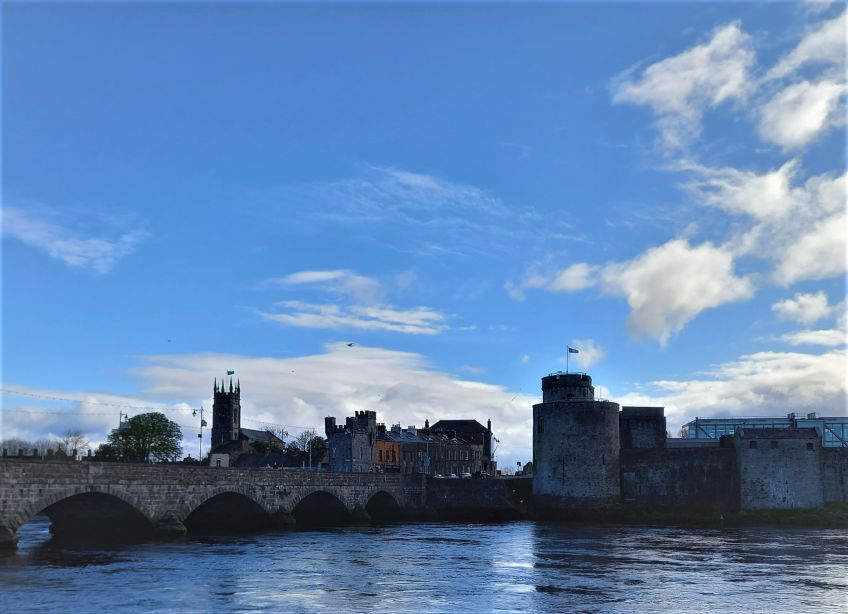
The 19th century Thomondgate Distillery
„On the other side was the Thomond Gate Distillery in the 19th
century.“ Nick points along the riverbank. Today, riverside homes
stand there in the historic Thomondgate district, from which the
distillery got its name. Nick opens an old view sketch of the
distillery on his phone and holds it comparatively in front of
today’s skyline. We alternately look at the screen and the other
side of the river. It quickly becomes clear what huge dimensions
the distillery once had.
„It was right on the river, so it had immediate access to
shipping. That meant barrels and spirits were coming in and
whiskey was going out to dealers like Michael Egan,“ explains Nick
Ryan.
Walnut House, Alfred Barnard, and Nick’s former teacher
Again we get into the car and drive the short distance across the
river to the former site of the old distillery. In front of a
building Nick stops. „This is the Walnut House,“ he says to me.
We look up at a two-story building with a blue door and large
windows. The facade is neatly overgrown with vines.
„I don’t know why it’s called Walnut House, but this is the only
building left of the distillery complex.
This is where the distillery manager used to live.“ Today, Nick’s
old teacher happens to live in the Walnut House. Nick visits him
from time to time to talk about the history of Limerick.
In addition, the building once housed a famous guest. „During his
stay in Ireland, Alfred Barnard stayed here after visiting the
distillery,“ Nick says. Barnard, an author and historian, toured
Ireland and the United Kingdom in the late 19th century, visiting
all the distilleries.
His resulting book also describes the erstwhile Thomond Gate
Distillery in Limerick. „Barnard describes the distillery as one
of the finest in the four kingdoms. His remarks on the technical
equipment are the
most extensive we have on the Thomond Gate Distillery,“ reports
Nick Ryan.
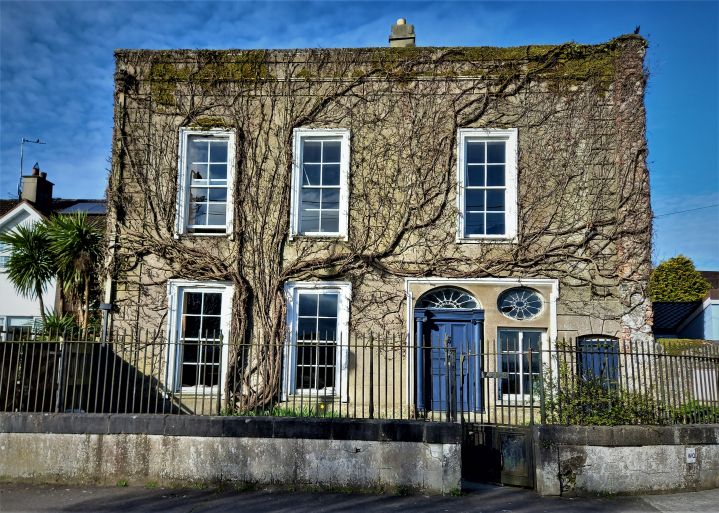
Thomondgate Distillery: 9 percent world market share and total collapse
In fact, in the second half of the 19th century, the distillery
was one of the most important in the world. Says Nick Ryan: „At
its best, Thomond Gate Distillery produced nine percent of the
world’s whiskey.“ Wow. That’s an impressive number. Standing in
front of the Walnut House, the only remnant of the former mega
distillery, it quickly becomes clear: At the same time, the
Thomond Gate Distillery is an equally impressive example of the
incredible collapse of the Irish whiskey industry at the beginning
of the 20th century.
Nick and I drive back to the backyard where he parks his car. On
foot we walk through the streets of Limerick’s city centre. The
sun is shining from the blue sky and the streets are bustling. We
do a little sightseeing and Nick shows me one or the other tourist
attraction of his city. It quickly becomes clear that Limerick is
not the damp, ugly little town from the 1930s that Frank McCourt
describes in his book „Angela’s Ashes“. And certainly not the capital
of gangs and criminals, as some newspaper articles would have you
believe.
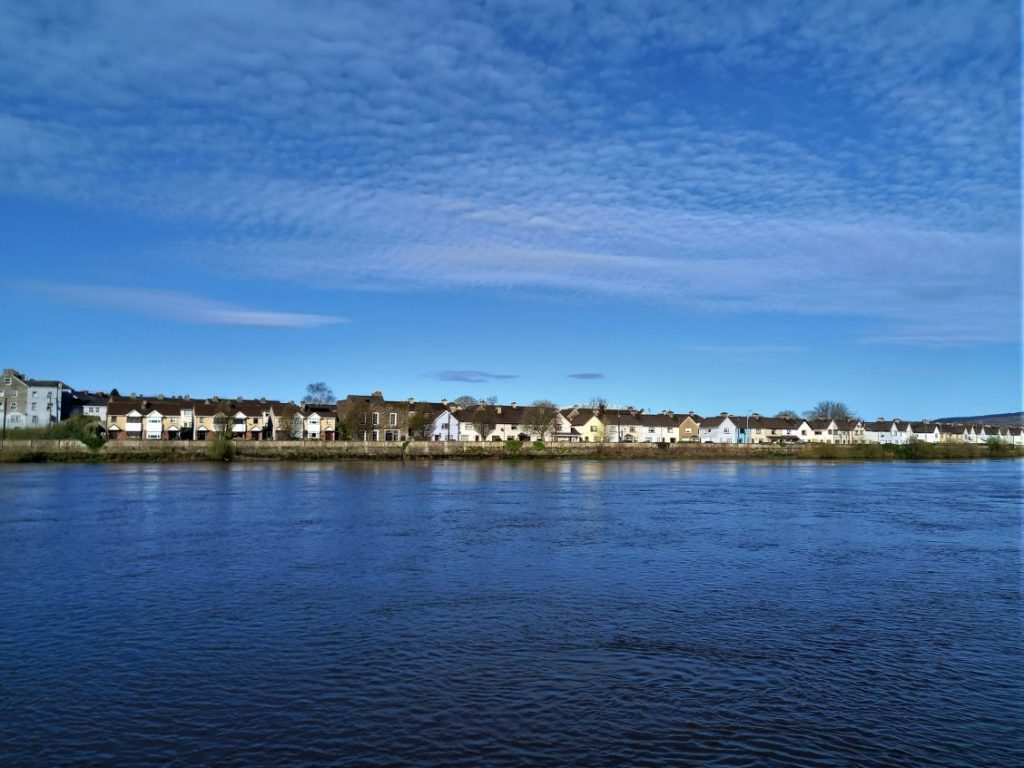
Nick Ryan: Limerick and Whiskey
Finally, we go to a small coffee shop and order coffee. Nick
orders an additional bag of coffee beans for the machine at home.
Outside, we sit down at a table to talk about his own business,
The Limerick Spirits Company, which he launched in 2019. Though
his earliest memory related to whiskey is from the 90s. „I
remember Bushmills Whiskey well back then. And the old advertising
signs on the walls in the pub where I first worked,“ Nick looks
back to his younger years.
He then worked in FinTech in London. „I sent money around the
world electronically,“ he describes his former job simply and a
little unemotionally. At the same time, his interest in whiskey
was growing. „The idea for Thomond Gate came to me back in 2007,“
says Nick Ryan. „There was an old poster in a pub in Graz in
Austria that said ‚Limerick Whiskey‘. That intrigued me.“ He
started to get more and more involved with whiskey, but especially
with the history of his hometown as a whiskey metropolis. „I was
magically drawn to the historical background. So was the
scientific aspect of production. For example, isn’t it incredibly
exciting how yeast turns sugar into alcohol overnight?“
Fascinated by Limerick’s whiskey past
Eventually Nick Ryan went back to Limerick and turned his back on
the London financial world. Back home, he started his own whiskey
company, The Limerick Spirits Company, as an independent bottler.
His goals: To reawaken the good name of the once-important Thomond
Gate Distillery with new whiskeys. And to put Limerick back on the
map of the Irish whiskey landscape. „It really is a one-man show
for the first few years,“ smiles Nick. „With me as the main man.“
He sourced his whiskeys from Great Northern Distillery, where he
also initially had them stored. „Having our own warehouse is on
the way, but it was easier that way to start,“ he explains.
His first release was a single pot still whiskey in late 2019 with
61 percent alcohol volume, stored in an Oloroso Sherry Cask. Only
100 bottles, bottled by his own hand, he brought to the market
while the rest of the whiskey remained in the barrel to be
released at a later date.
Subsequently, single cask releases appeared regularly, in which
Nick Ryan put a lot of emphasis on qualitative whiskey and good as
well as unusual casks. Among them are finishes in a Peated Bourbon
Cask, a Cognac Cask and a barrel,
which previously contained Rye Whisky from the Danish Stauning
Distillery. A real focus is on beer cask finishes. For this Nick
works together with Treaty City Brewery, a craft beer brewery from
Limerick. Several batches of Imperial Stout Cask Finishes have
been released since then.
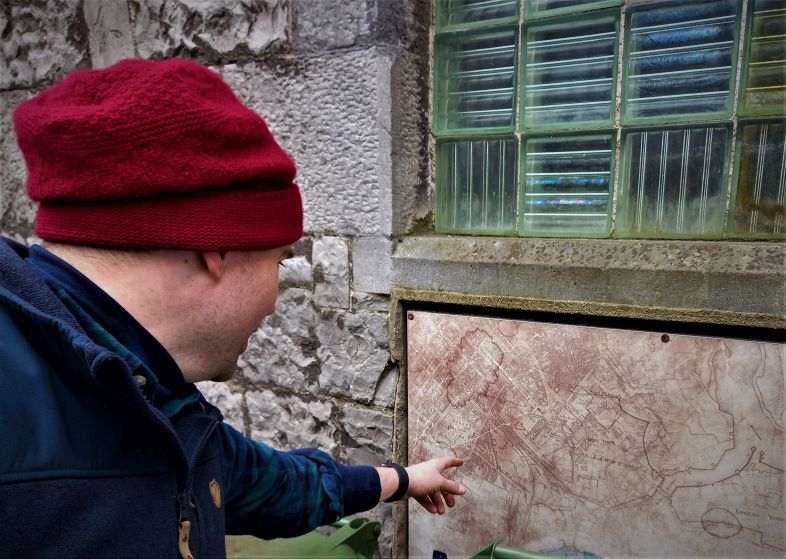
A successful start for Thomond Gate Limerick Whiskey
While we are talking about his whiskeys, a young woman is watching
us at the next table. She is wearing a tie and drinking from a
large cup of coffee. She interrupts us and asks which whiskey we
are talking about. „Thomond Gate Limerick Whiskey,“ Nick replies
amiably. Is that the whiskey that’s always sold out, she asks us.
Nick and I laugh. „Yeah, it always goes pretty fast. Sorry about
that,“ Nick says.
In fact, Nick Ryan earned himself a small fan base with his
previous whiskeys. Accordingly, the bottles sold at a rapid pace
so far. When in January 2022 the Danish Rye Cask Finish appeared
exclusively at a drinks shop in Limerick, hundreds gathered
outside the door to get one of the coveted bottles.
Future in Limerick
Nick wants to build on these initial successes with Thomond Gate
Limerick Whiskey. In addition, the business model as an
independent bottler and in the future as a bonder with its own
warehouse serves a purpose: „In the medium term, I would like to
build another distillery in Limerick,“ he casts a glance ahead.
„I’ve been travelling around Scotland a lot recently, visiting
distilleries and learning a lot technically. By now I’ve got a
pretty good idea of what my own stills will look like.“
In doing so, he will unfortunately not be building his own
distillery on the site of the old Thomond Gate Distillery on the
Shannon. „I’ve been looking at various properties and locations
throughout Limerick. There is little opportunity for the venture
in Thomondgate itself today,“ he says contritely. Nor will he be
able to find an original
Thomond Gate whiskey can be made according to old recipes.
„Unfortunately, no such documents exist,“ says Nick Ryan. However,
he already has clear ideas about what his own whiskey should look
like. „My whiskeys will follow a rather fruity style“, he
explains. He does not want to say much more yet. „That’s still in
the future,“ he smiles.
Nick looks up and calls to a passerby who was walking behind me. A
young man stops and happily greets Nick. Nick introduces me to the
man and I listen briefly as the two exchange pleasantries and
arrange to meet later. As they do, I watch Nick with fascination.
A man, family deeply rooted in this city, historically highly
interested and with a clear vision for himself and the former
whiskey location Limerick.
